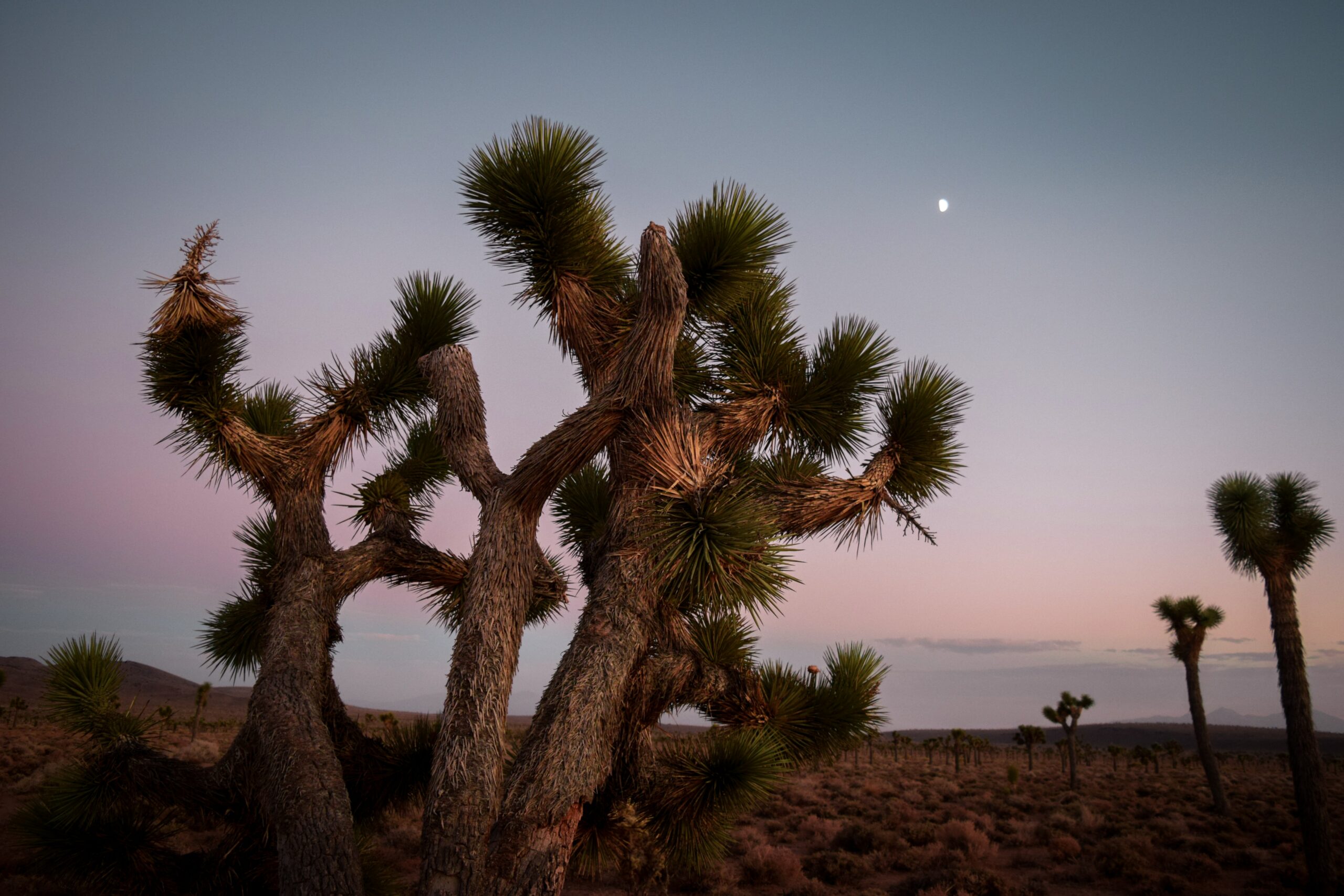Winter in Joshua Tree National Park
12/16/23While the scorching heat of summer may deter some, winter provides an ideal time to explore this national treasure. With mild weather, fewer crowds, and a dusting of snow on the majestic Joshua trees, Joshua Tree in winter transforms into a winter wonderland that is both serene and breathtaking.
In this blog post, we will delve into the best things to do in Joshua Tree National Park in winter, providing insights on the weather, snow conditions, crowd levels, and must-see attractions.

Weather in Joshua Tree in Winter
Winter in Joshua Tree brings pleasant and comfortable daytime temperatures, typically ranging from the low 40s to high 60s degrees Fahrenheit. However, nights can be chilly, with temperatures occasionally dipping below freezing.
It is important to pack appropriate clothing and layers to stay warm during your visit. The sun still shines brightly in the desert, so don’t forget your sunscreen!
Does it Snow in Joshua Tree?
While Joshua Tree is primarily known for its desert landscapes, it does receive occasional snowfall during the winter months. The higher elevations of the park, such as the Cottonwood Mountains, are more likely to experience snow, but it is also possible to see a dusting of snow on the iconic Joshua trees in the lower elevations. If you’re lucky enough to see a dusting of snow on the desert landscape, it’s a truly magical sight. Just be aware that roads may be icy, so drive carefully.
Is Joshua Tree National Park Busy in Winter?
Winter is a quieter time to visit Joshua Tree National Park compared to the peak season in spring and fall. This means you’re less likely to encounter large crowds, allowing for a more peaceful and immersive experience in the wilderness. However, it is always a good idea to check the park’s website for any updates on visitor numbers or closures.
Best Joshua Tree Winter Hikes
Joshua Tree National Park offers a variety of hiking trails that are perfect for exploring in winter. Here are a few of the most popular and scenic winter hikes:
Lost Horse Mine: This 4.8-mile out-and-back trail leads to an abandoned gold mine. The trail meanders through a variety of desert landscapes, including Joshua tree forests, rocky canyons, and sandy washes.
Discovery Trail: This 1.2-mile loop trail is an easy and great option for families. It offers beautiful views of the Mojave Desert and a variety of desert plants. The trail is also wheelchair accessible.
Skull Rock: This easy 1.7-mile out-and-back trail winds through a maze of boulders to a large skull-shaped rock. It’s a fun and unique hike that’s perfect for kids.
Best Places to Visit in Joshua Tree National Park
Hidden Valley: This scenic valley is home to a variety of desert plants and animals. The trail leading to the valley is a moderate 1-mile loop.
Keys View: This overlook offers breathtaking views of the Coachella Valley and the San Andreas Fault. It’s a great place to watch the sunrise or sunset.
Cholla Cactus Garden: This garden is home to a dense stand of teddybear cholla cacti. It’s a great place to learn about this unique desert plant.
Tips for Visiting Joshua Tree National Park in Winter
- Be prepared for cold weather. Dress in layers and bring a warm jacket, gloves, and a hat.
Pack plenty of water. The desert is dry, so it’s important to stay hydrated. - Be aware of the dangers of flash floods. If there is a chance of rain, stay away from washes and low-lying areas.
- Don’t disturb the wildlife. Joshua Tree National Park is home to a variety of desert animals, including bighorn sheep, coyotes, and rattlesnakes. Give them plenty of space and don’t feed them.
- Leave no trace. Pack out everything you bring in, including food scraps and trash.
